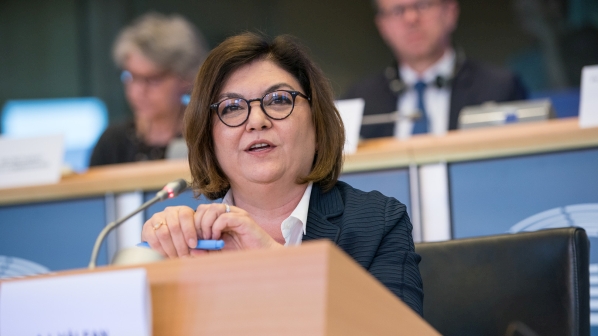In a speech to the European Parliament on June 23 to provide an update on the TEN-T evaluation process, Vălean said certain projects were delayed and risked missing the 2030 deadline.
“Extending this deadline is not an option, nor is reducing ambition,” Vălean says. “The only way forward is instead to strengthen the mandatory nature of member states’ obligations, and to reinforce EU-level instruments and the governance of the network, which proves every day to be more important.”
A report from the European Court of Auditors (ECA) earlier this month found that many projects were behind schedule and over budget, and some were based on over-optimistic traffic forecasts.
The TEN-T evaluation process was launched by the European Commission (EC) in spring 2019, and has so far received the views of more than 600 organisations and citizens.
The EC launched the second phase of targeted stakeholder consultation earlier this year, and key professional organisations are now sharing their vision on the overall functioning of the TEN-T regulation. The EC has also asked around 1500 experts for input on issues such as urban nodes, infrastructure quality, digitalisation, new technologies, cooperation with third countries, and the functioning of the core network corridors.
Vălean says that while the consultation is ongoing, there are some early indicators from the work already conducted. This includes strong support for the TEN-T network, as it:
- has a strong EU dimension and with high European added-value allowing individual member state’s priorities to be scaled up into a European vision
- improves infrastructure quality throughout the EU, eliminating technical barriers and promoting seamless, safe and efficient cross-border mobility
- fosters change to ensure the EU keeps pace with technological progress, and
- would enable huge benefits from closer integration between innovative and more traditional infrastructure, especially as the EU targets decarbonisation.
Vălean says respondents also expressed strong support for the core network corridor approach, and called for reinforced EU instruments to support this.
However, the review has also identified two aspects that need revision: planning and implementation, and enhanced infrastructure quality.
Vălean says that as well as strengthening the member states’ obligations, the network also needed to be updated. “As mentioned earlier the idea is not lose focus on the main objective for 2030. However, minor adjustments will certainly be needed, and accommodated - for example the inclusion of missing cross-border connections or enhanced connectivity for some peripheral regions.”
New developments not foreseen in 2013, when the network was first developed, would also mean that some aspects will need to be updated.
“We need therefore to integrate alternative fuel infrastructure as a mandatory TEN-T requirement, and take account of military mobility needs,” Vălean says. “We need to enable automation, and we must provide for future-oriented technological solutions which we know are coming.
“Digitalisation is clearly a must for tomorrow’s TEN-T. We have already made progress with ERTMS, single European sky (Sesar) and River Information Services (RIS). The Covid-19 crisis has further showed us the urgent need to harness all the possibilities of digital solutions - the need for reduced procedures and paperless exchanges of documents, the urgency to make use of satellite technologies. The TEN-T revision will be the opportunity to make TEN-T policy ready to the digital transition.”
Vălean says there are a number of ways the TEN-T can support sustainability, including ensuring the availability of charging and refuelling infrastructure, and integrating and interconnecting all transport modes to optimise the system.
While the development of new infrastructure continues, the review will include an analysis of existing infrastructure.
“We are also assessing how to ensure continued structural quality of vulnerable infrastructure such as bridges,” Vălean says. “We want to make sure that accidents such as that seen in Genoa in 2018 will never happen again. Some of the requirements and standards of the network will also have to be re-assessed. Not all of them reflect what a high-quality network should look like in 2030.”
The final aspect that requires rethinking, according to Vălean, is the passenger side of transport.
“We need to look at infrastructure developments and planning fully integrating passengers,” she says. “With particular attention of those with reduced mobility, creating the conditions for a seamless, affordable, and comfortable journey across the EU.”

